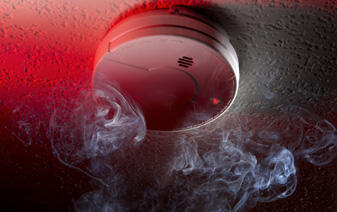Smoke Alarm Basics
A smoke alarm is a device that senses smoke, typically as an indicator of fire. Commercial security devices issue a signal to a fire alarm control panel as part of a fire alarm system, while household smoke alarms, generally issue a local audible or visual alarm.
How Do I Maintain My Smoke Alarm?
Smoke alarms can only work if they are properly located, installed, and maintained. Roughly two-thirds of home fire deaths happen in homes with either no smoke alarms or no smoke alarms that work.
- Test alarms at least once a month by pushing the test button.
- Smoke alarms with non-replaceable batteries are designed to work for 10 years. If the alarm chirps, warning that the battery is low, replace the entire alarm immediately.
- For smoke alarms with any other type of battery, replace batteries at least once a year. If the alarm chirps, replace the battery right away.
- If a smoke alarm does not respond when tested, it needs to be replaced.
- Gently vacuum the grillwork of your alarm to remove dust, bugs, and other debris that may prevent the alarm from functioning properly.
Statistics
- Three out of five home fire deaths result from fires in properties without working smoke alarms
- More than one-third (38 percent) of home fire deaths result from fires in which no smoke alarms are present.
- The risk of dying in a home fire is cut in half in homes with working smoke alarms.




